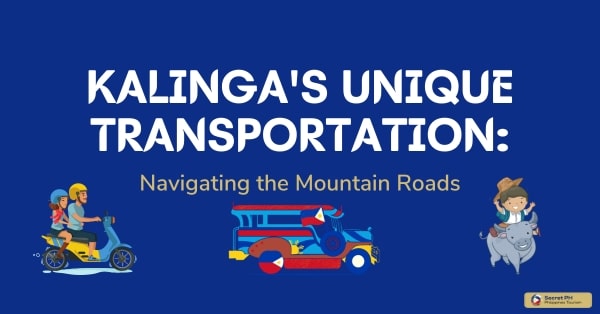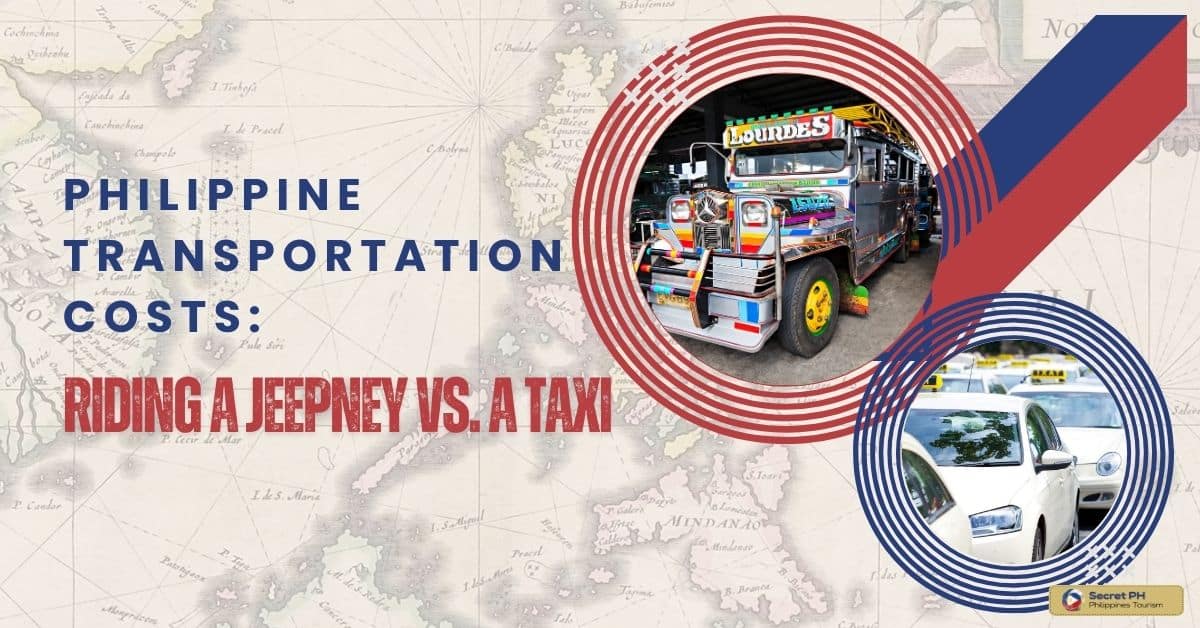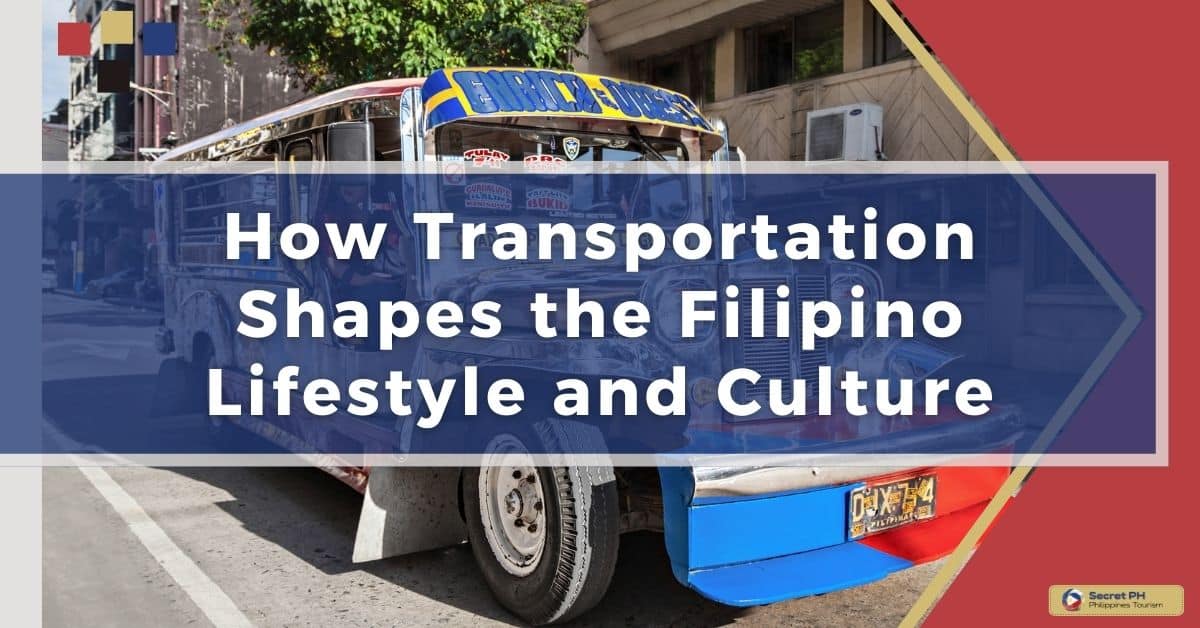The LRT and MRT systems are vital modes of public transportation in the Philippines, particularly in the National Capital Region. Despite facing various issues and challenges, they continue to serve millions of commuters daily, offering an affordable and convenient means of travel.
In this blog post, we’ll take a look at the history, routes, fares, safety measures, and other aspects of the LRT and MRT systems in Manila. We’ll also examine how they compare to other forms of transportation available in the Philippines.
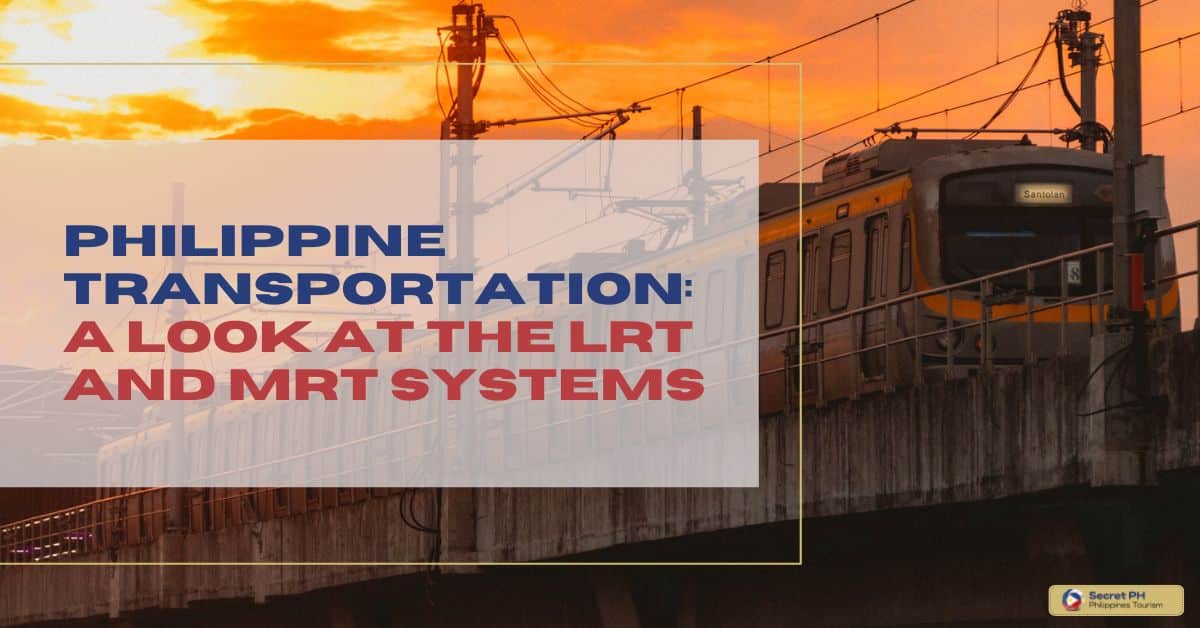
History and Development of the LRT and MRT Systems
The LRT and MRT systems in Manila have been around for decades since the first Light Rail Transit line was opened in 1984. The development of these two rail lines is linked to the growth of Metro Manila as a major urban center in Southeast Asia.
Throughout the years, various extensions and additional lines were added, and today the system consists of 13 lines. The longest rail line is the MRT-3, which runs from North Avenue Station in Quezon City to Taft Station in Pasay City.
In 2015, the Philippine government launched its Mass Transit Modernization Program (MTMP). Which aims to further expand and improve the existing LRT and MRT systems. The goal of the program is to increase capacity, reduce overcrowding, and provide safer and more efficient public transportation.
So far, several projects have been completed as part of this initiative, including the expansion of the Metro Rail Transit lines from 13 to 15. There are also ongoing plans for further developments in the coming years.
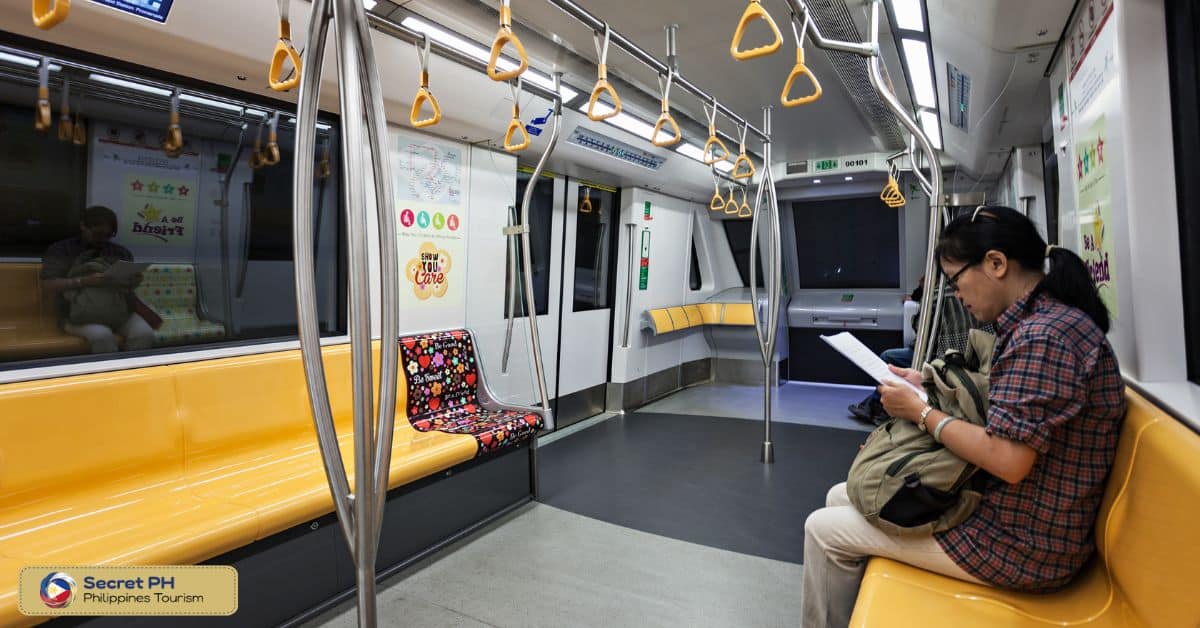
Routes and Stations of the LRT and MRT Systems
The LRT and MRT systems in the Philippines are composed of more than 140 stations in major metro cities like Manila, Quezon City, Pasay City, Makati City, Marikina City, and Valenzuela City. The total length of the system is approximately 79 kilometers (49 miles).
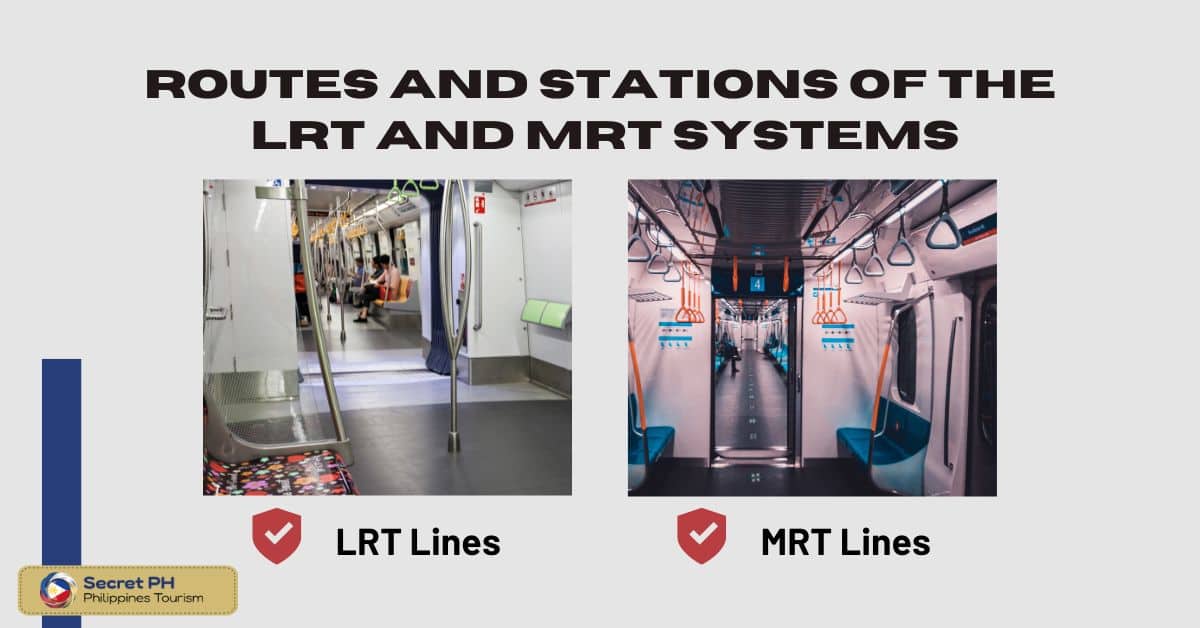
LRT Lines
The Light Rail Transit (LRT) lines are two of the most popular public transportation networks in Metro Manila, Philippines. LRT Line 1 run from north to south and LRT Line 2 runs from east to west. It is a fast, convenient, and affordable way for commuters to get around the city.
Route and Stations of LRT Line 1
LRT Line 1 runs from Roosevelt Station in Quezon City to Baclaran Station in Paranaque City. It has 20 stations along its 23-kilometer route; the stations are Roosevelt, Balintawak, 5th Avenue, Monumento, R. Papa, Abad Santos, Blumentritt, Tayuman, Bambang, Doroteo Jose, Carriedo, Central Terminal, United Nations Avenue (UN Ave), Vito Cruz, Quirino Avenue (Q Ave), Pedro Gil Street, EDSA Station (Cultural Center of the Philippines Complex), Libertad Station and Baclaran Station.
Route and Stations of LRT Line 2
LRT Line 2 runs from Recto Station in Manila to Santolan Station in Pasig City, with a total of 13 stations along its 16-kilometer route; the stations are Recto, Legarda, Pureza, V Mapa, Jruel, Gilmore, Betty Go-Belmonte, Araneta Center-Cubao, Anonas, Katipunan Ave., Santolan, Marcos Highway and Recto Station.
MRT Lines
The Metro Rail Transit (MRT) lines are the most efficient and reliable form of public transportation in Manila. It is an underground rapid transit system with 13 stations that stretch across the length of the city.
Route and Stations of MRT-3 Line
The MRT-3 Line has 13 stations running from North Avenue Station in Quezon City to Taft Avenue Station in Pasay City; its route is approximately 22 kilometers long. The stations are North Ave, Quezon Ave., GMA Kamuning, Cubao, Ortigas, Shaw Blvd., Boni Ave., Guadalupe, Buendia, Ayala Ave., Magallanes, Taft Avenue and EDSA.
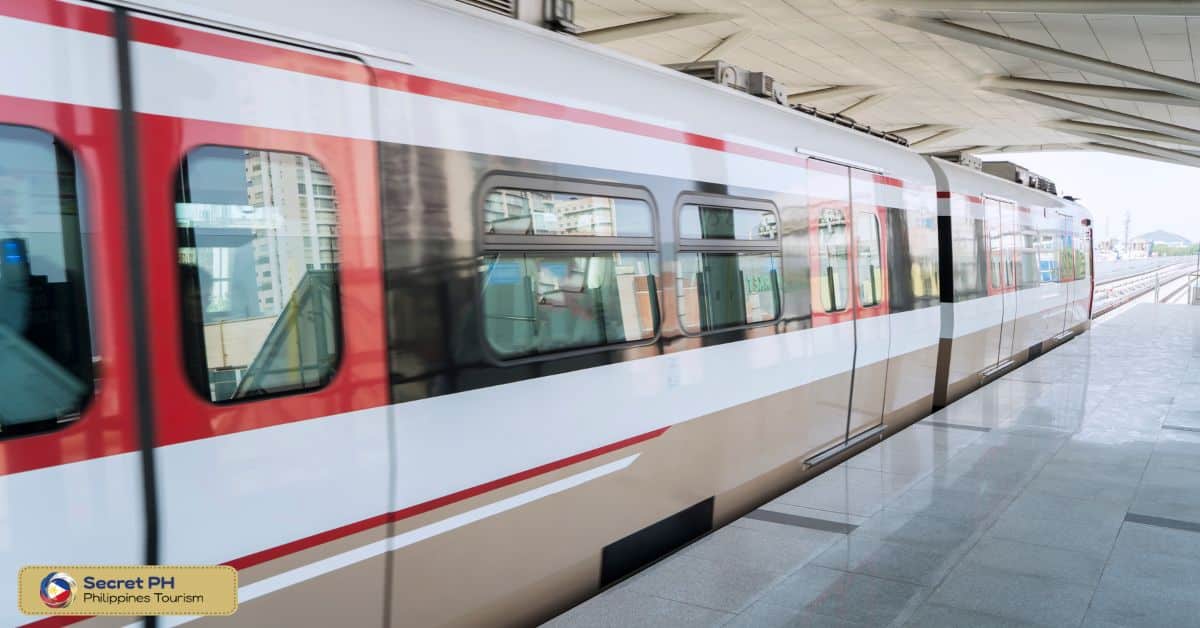
Passenger Experience and Safety Measures in the LRT and MRT Systems
The Light Rail Transit (LRT) and Mass Rapid Transit (MRT) systems in Manila offer an efficient, affordable, and convenient way for commuters to travel around Metro Manila. In this section, we’ll take a look at what passengers can expect from their journey, as well as the safety measures in place to ensure a safe and comfortable ride.
Passenger Experience
Riding the LRT and MRT lines is generally a pleasant experience for commuters. The trains are air-conditioned and equipped with LCD screens that show train arrival times, destination information, and other announcements. The stations are also well-lit, clean, and spacious.
In addition, both the LRT and MRT systems offer priority seating for elderly passengers and persons with disabilities (PWDs). There is a designated area at the front of each train car where PWDs can easily access their seats.
Safety Measures
The safety of passengers is the top priority for the LRT and MRT systems. There are CCTV cameras installed in all stations and train cars, which are monitored 24/7 by trained personnel.
In addition, transit marshals are deployed to patrol station platforms and trains during operating hours. All trains also come equipped with emergency buttons that alert staff in case of any medical or security concerns.
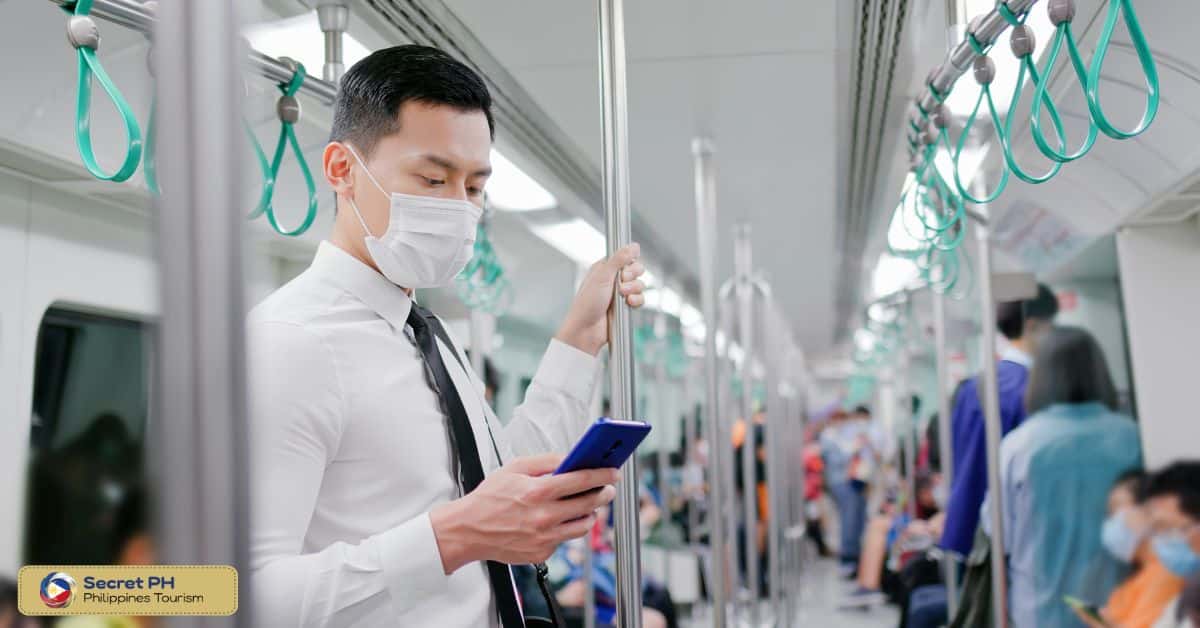
Operating Hours and Fares of the LRT and MRT Systems
The Light Rail Transit (LRT) and Mass Rapid Transit (MRT) systems are essential components of the public transportation network in the Philippines. They provide a convenient, efficient, and affordable way for commuters to navigate Metro Manila and its surrounding cities. In this section, we’ll take a look at the operating hours and fares of the LRT and MRT lines.
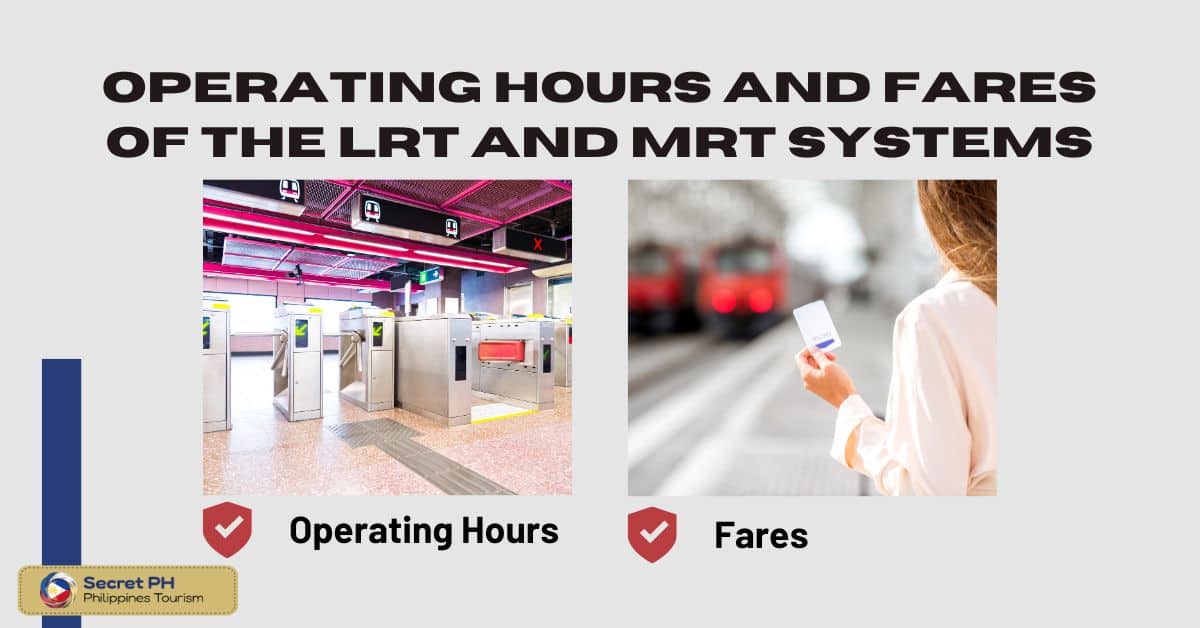
Operating Hours
The operating hours for the LRT and MRT systems are from 4:30 am until 11:00 pm daily. However, this may vary depending on the time of day and special holidays. Commuters can expect more frequent train arrivals during rush hour periods.
Fares
The fare for the LRT and MRT lines ranges from ₱15 to ₱30 depending on the distance traveled. Commuters can pay using cash or an automated ticketing system which requires a stored-value card. The cards are available at all stations and come with a refundable deposit of ₱100.
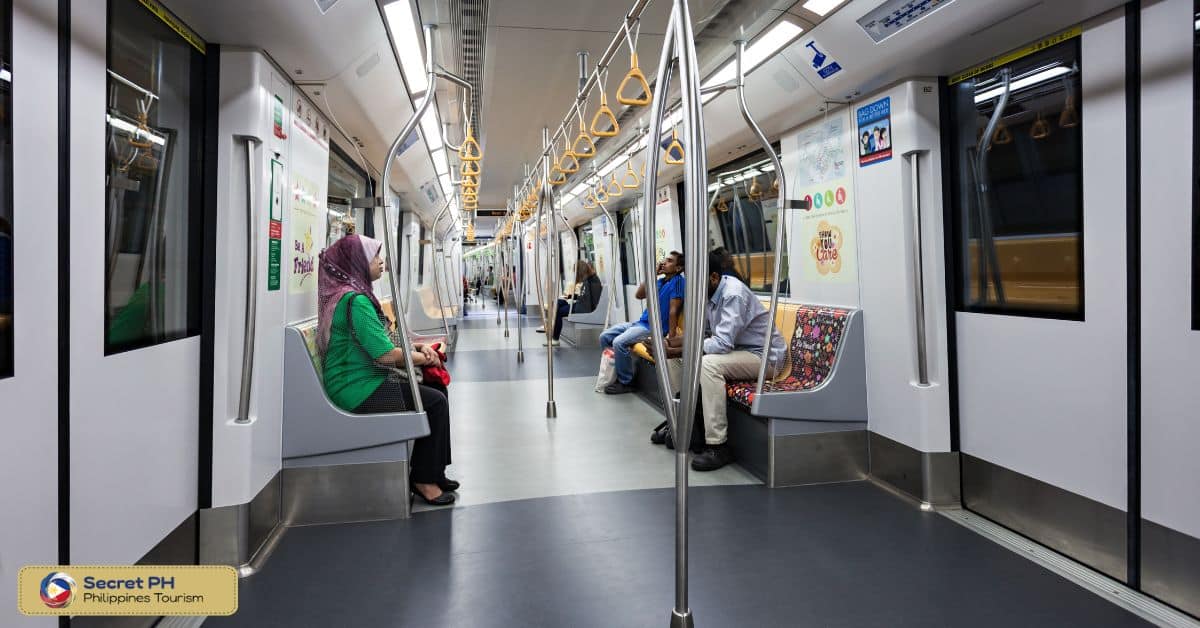
Issues and Challenges Facing the LRT and MRT Systems
The LRT and MRT systems in the Philippines are vital components of the country’s public transportation network. However, they face a number of issues and challenges that need to be addressed in order for them to continue providing efficient and safe service for commuters.
Overcrowding: The LRT and MRT systems are often overcrowded during rush hour, resulting in long waiting times and delays.
Poor Maintenance: The system has suffered from a lack of regular maintenance, leading to frequent breakdowns and safety issues.
Inadequate Funding: Insufficient government funding has resulted in a shortage of rail cars and personnel, as well as delays in important projects.
Security Concerns: Despite the presence of security measures, there have been reports of petty theft and other criminal activities around stations.
Limited Expansion: The existing LRT and MRT systems are limited in scope, with only a few lines connecting major cities.
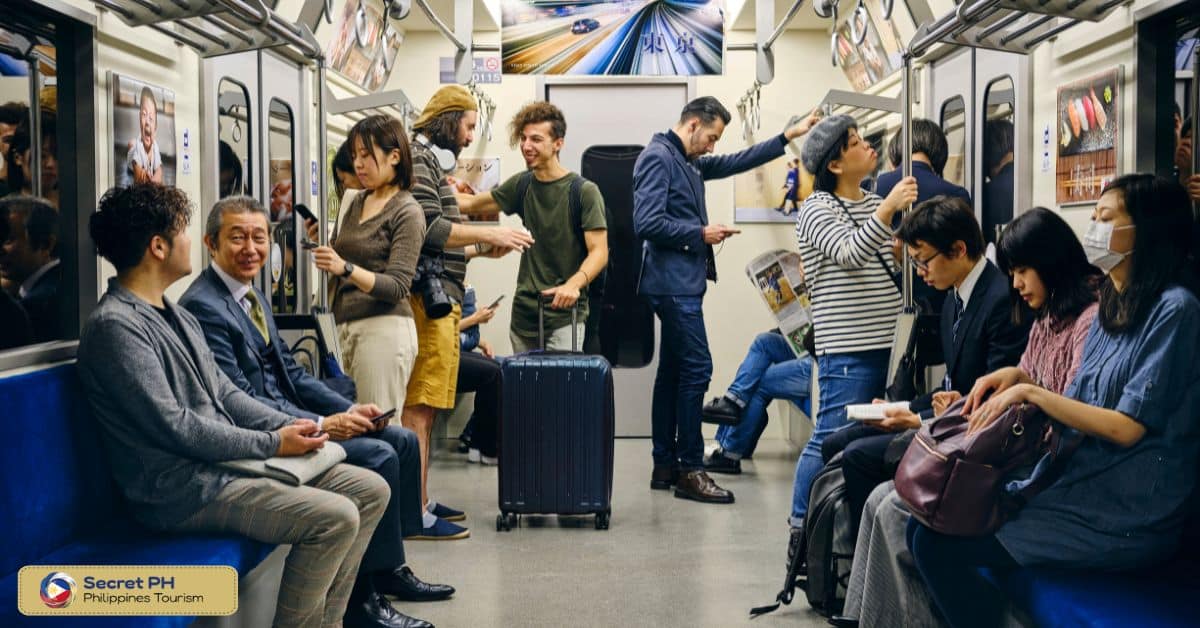
Future Plans and Developments for the LRT and MRT Systems
The Philippine government has long-term plans to improve and expand the existing LRT and MRT systems. The Mass Transit Modernization Program (MTMP) was launched in 2015, aiming to further develop the lines and increase capacity. Several projects have already been completed under this initiative, including the expansion of the Metro Rail Transit lines from 13 to 15.
In the coming years, further projects will be implemented to improve the LRT and MRT systems. These include plans for new vehicles and signaling systems, as well as upgrades for infrastructure and stations.
The goal of these projects is to ensure a safe and comfortable journey for commuters, as well as reduce overcrowding during peak hours. Additionally, the Philippine government is investing resources in clean energy solutions, such as solar power and batteries, to reduce emissions from train operations.
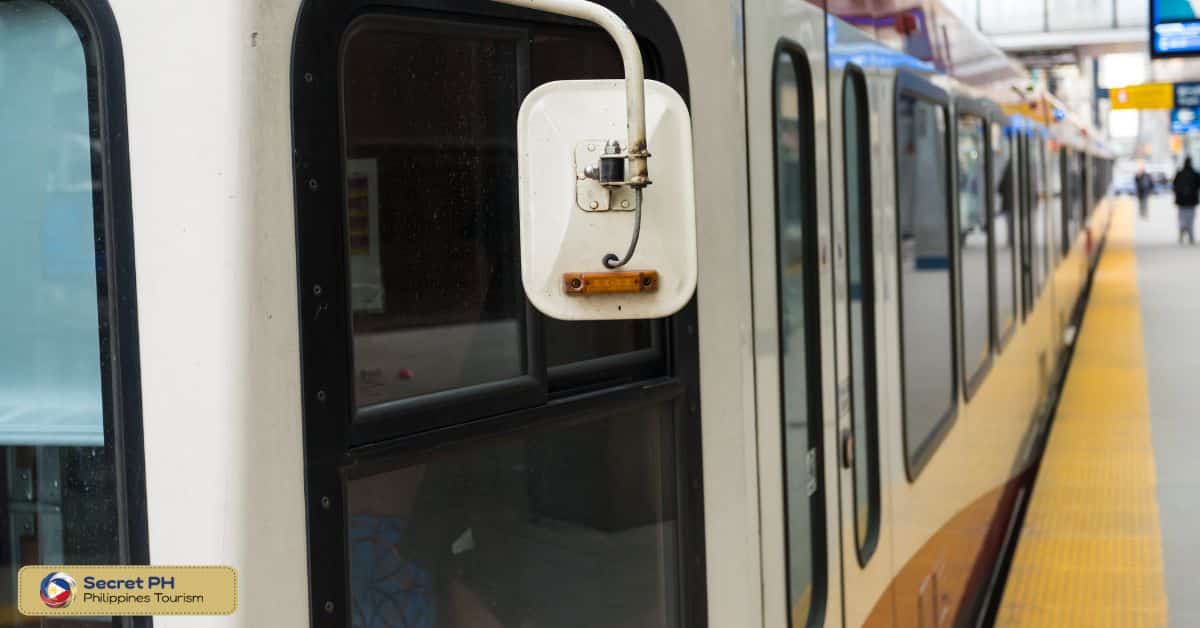
Comparison with Other Forms of Transportation in the Philippines
Introduction: While the LRT and MRT systems are important modes of public transportation in the Philippines, there are other forms of transportation available as well. Here is a comparison table that highlights some of the key features and differences between the LRT/MRT systems and other transportation options in the country.
| Transportation Mode | Advantages | Disadvantages | Cost (PHP) | Coverage Area | Frequency |
|---|---|---|---|---|---|
| LRT/MRT Systems | Fast and efficient, no traffic delays, air-conditioned, wheelchair accessible | Can be overcrowded during rush hour, limited coverage area, frequent breakdowns, safety concerns | 15-30 | National Capital Region | 3-5 minutes |
| Jeepneys | Cheap, accessible, flexible routes | Overcrowding, lack of comfort, no air conditioning, safety concerns, traffic delays | 8-15 | Nationwide | 5-10 minutes |
| Buses | Comfortable, air-conditioned, wheelchair accessible | Traffic delays, limited routes, can be expensive, safety concerns | 10-20 | Nationwide | 10-15 minutes |
| Taxis | Fast, comfortable, door-to-door service | Expensive, traffic delays, safety concerns, driver dishonesty | 40-50 initial fare, 13-14 per km | Nationwide | On-demand |
| Tricycles | Accessible, flexible routes | Lack of comfort, safety concerns, limited passenger capacity | 20-50 | Local destinations | On-demand |
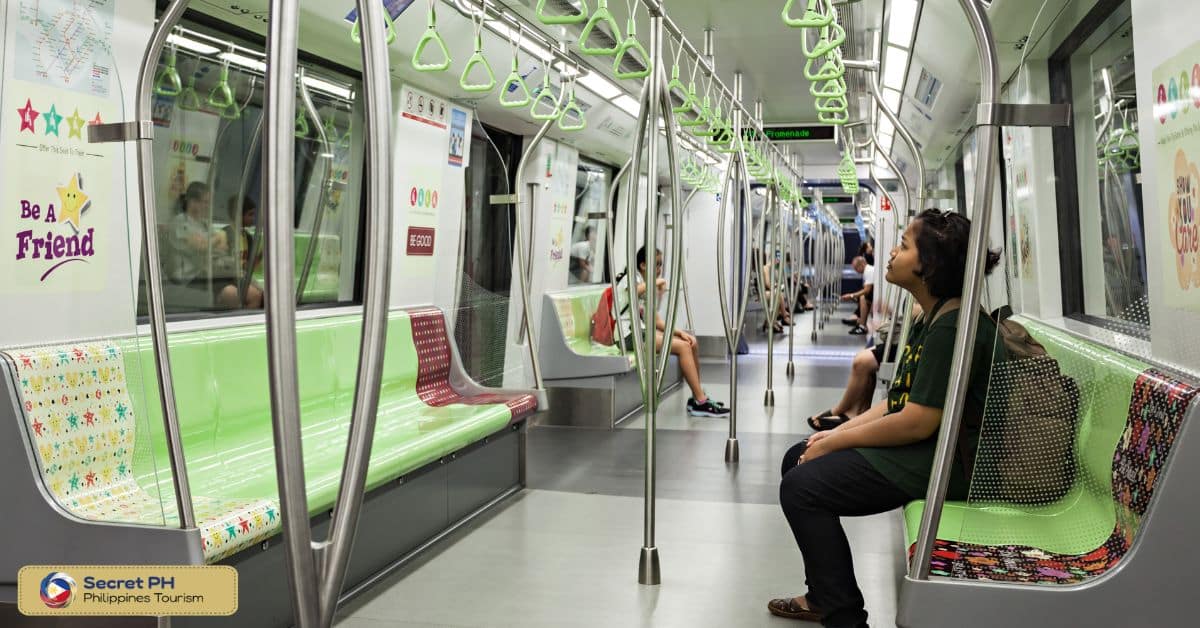
In conclusion
The LRT and MRT systems are an essential part of public transportation in the Philippines. They provide a convenient, efficient, and affordable way for commuters to navigate Metro Manila and its surrounding cities. Despite facing various issues and challenges, these rail lines continue to serve millions of Filipinos daily.
In order for them to continue providing a safe and comfortable ride, the government must invest in further improvements and expansions. This includes new vehicles and signaling systems, upgrades for infrastructure and stations, clean energy solutions, and other initiatives. These efforts will go a long way in ensuring that the LRT and MRT systems meet the needs of commuters in the years to come.

